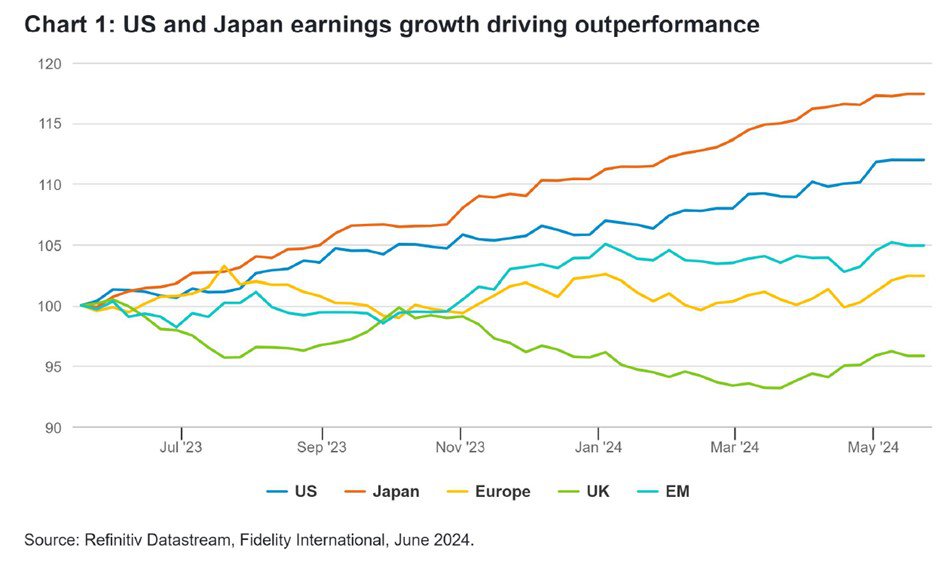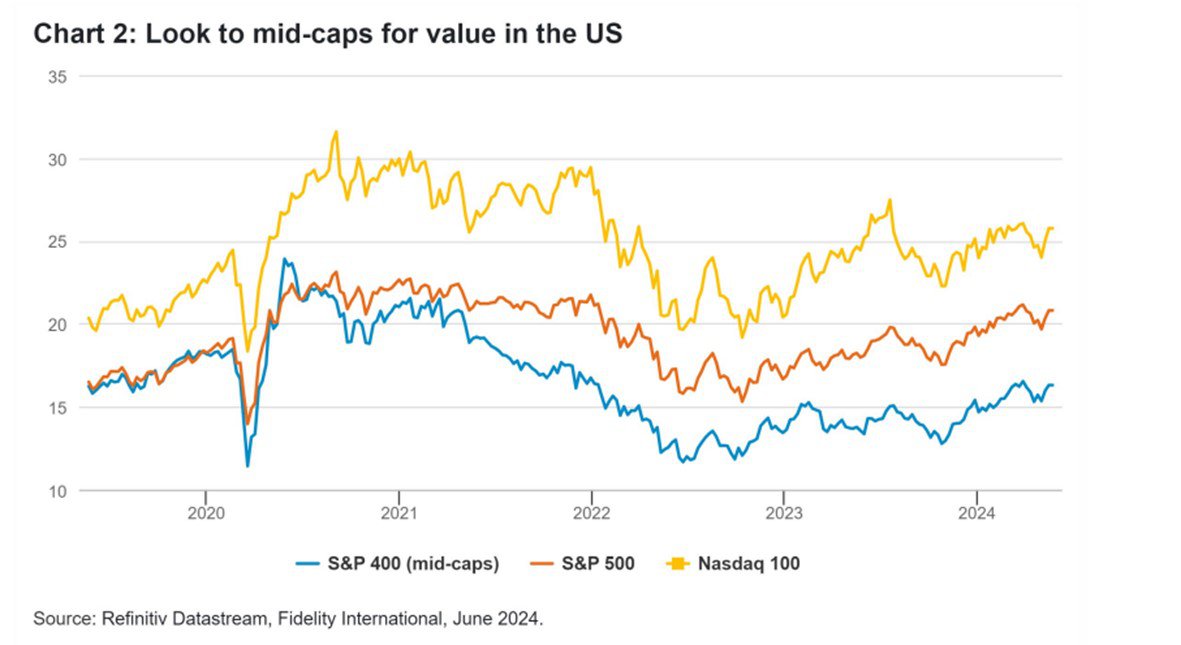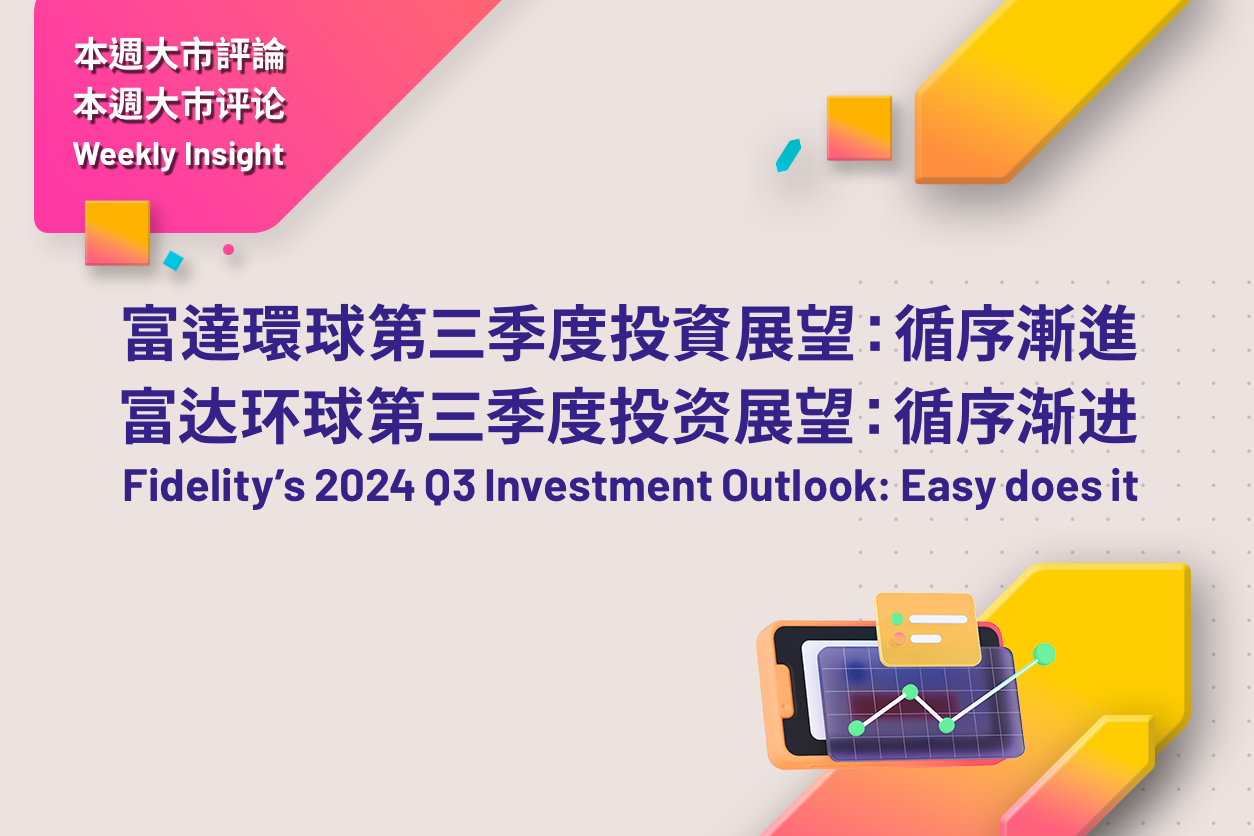 Sticky inflation continues to temper expectations, however. This time last quarter, we were concerned that a stubbornly tight labour market might force the US Federal Reserve to keep rates higher for longer, which would eventually slow 2024’s positive momentum.Labour market reports for June looked hotter than the Fed would like, but softening inflation in May adds to our growing confidence that price rises won’t reaccelerate from here. The range of outcomes when it comes to the magnitude of potential rate cuts by the Fed have narrowed significantly since the start of the year. We think that the bar for the cutting cycle to start remains high but recent progress on the inflation front has been encouraging.A soft landing is the most likely outcome - and that’s a good thing for global growth and investors who are willing to take on additional equity risk.Controlled stabilisation in ChinaWe continue to believe that 2024 will be a period of 'controlled stabilisation' for China.Policymakers are attempting to reduce the dominance of the property sector and rebalance the economy towards higher-end manufacturing and consumption.It has taken some time for investors to adapt to this change - especially following the anaemic comeback of the economy after the pandemic turned appetite away from China - but sentiment has begun to re-establish, if at low levels. China’s economy is normalising as demand for goods and services gradually improves.Policy shifts are starting to bear fruit in certain corners of China’s economy. The most obvious is manufacturing, supported by a resurgence in overseas demand. There are some upbeat signals from consumption too, led by the rebound in holiday travel.This stabilisation is good news for China. It also bodes well for other economies in the region and for investors, who will be breathing a sigh of relief over the retreat in negative sentiment that pervaded the country in the first half of the year.Time to be tacticalSolid fundamentals and a strengthening China mean we are adding risk to our portfolios. But doing so requires a nose for nuance: we expect divergence between regions and sectors is likely to be high in Q3, which means being tactical with that risk.One point of divergence is monetary policy across developed markets. The eurozone has cut rates ahead of the US, as we expected. While this lays some groundwork for Europe to build on the positive momentum it’s established over recent months, the risk of a devaluing euro means that the European Central Bank’s (ECB) easing path from here is closely tied to the Fed’s. We think it’s unlikely the ECB will cut much further without the Fed following suit.Conditions look ripe for US and Japanese equities to continue their strong run. Robust growth and healthy earnings in the former, coupled with structural tailwinds and corporate reforms in the latter, go some way to justifying rising valuations in these regions. But they don’t go all the way - in the US in particular, we’re looking beyond frothier parts of the market to uncover value. Mid-caps offer strong long-term growth potential at a reasonable price, and they should also prove resilient to higher rates.
Sticky inflation continues to temper expectations, however. This time last quarter, we were concerned that a stubbornly tight labour market might force the US Federal Reserve to keep rates higher for longer, which would eventually slow 2024’s positive momentum.Labour market reports for June looked hotter than the Fed would like, but softening inflation in May adds to our growing confidence that price rises won’t reaccelerate from here. The range of outcomes when it comes to the magnitude of potential rate cuts by the Fed have narrowed significantly since the start of the year. We think that the bar for the cutting cycle to start remains high but recent progress on the inflation front has been encouraging.A soft landing is the most likely outcome - and that’s a good thing for global growth and investors who are willing to take on additional equity risk.Controlled stabilisation in ChinaWe continue to believe that 2024 will be a period of 'controlled stabilisation' for China.Policymakers are attempting to reduce the dominance of the property sector and rebalance the economy towards higher-end manufacturing and consumption.It has taken some time for investors to adapt to this change - especially following the anaemic comeback of the economy after the pandemic turned appetite away from China - but sentiment has begun to re-establish, if at low levels. China’s economy is normalising as demand for goods and services gradually improves.Policy shifts are starting to bear fruit in certain corners of China’s economy. The most obvious is manufacturing, supported by a resurgence in overseas demand. There are some upbeat signals from consumption too, led by the rebound in holiday travel.This stabilisation is good news for China. It also bodes well for other economies in the region and for investors, who will be breathing a sigh of relief over the retreat in negative sentiment that pervaded the country in the first half of the year.Time to be tacticalSolid fundamentals and a strengthening China mean we are adding risk to our portfolios. But doing so requires a nose for nuance: we expect divergence between regions and sectors is likely to be high in Q3, which means being tactical with that risk.One point of divergence is monetary policy across developed markets. The eurozone has cut rates ahead of the US, as we expected. While this lays some groundwork for Europe to build on the positive momentum it’s established over recent months, the risk of a devaluing euro means that the European Central Bank’s (ECB) easing path from here is closely tied to the Fed’s. We think it’s unlikely the ECB will cut much further without the Fed following suit.Conditions look ripe for US and Japanese equities to continue their strong run. Robust growth and healthy earnings in the former, coupled with structural tailwinds and corporate reforms in the latter, go some way to justifying rising valuations in these regions. But they don’t go all the way - in the US in particular, we’re looking beyond frothier parts of the market to uncover value. Mid-caps offer strong long-term growth potential at a reasonable price, and they should also prove resilient to higher rates.
On a sectoral basis, it’s hard to look beyond the earnings momentum of technology companies, and we also like the positive earnings revisions of US and European financials.We like convertible bonds, which can benefit from any continued momentum in equities and can offer some buffer if credit spreads don’t widen substantially. It’s a segment of the market that’s becoming increasingly populated by higher quality issuers, including some from attractive growth sectors like technology.It’s finding seams in the market like these which could lift portfolio performance this quarter. The global economy now marches to a positive beat, but diverging policy will breed differentiating performance across assets.
Want to search and invest in related funds?Open the WeLab Bank App and click【Featured Funds】to find out more!
Importance NoticeThis document is for general information only. The information or opinion herein is not to be construed as professional investment advice or any offer, solicitation, recommendation, comment or any guarantee to the purchase or sale of any investment products or services. This document is for general evaluation only. It does not take into account the specific investment objectives, financial situation or particular needs of any particular person or class of persons and it has not been prepared for any particular person or class of persons. The investment products or services mentioned in this webpage are not equivalent to, nor should it be treated as a substitute for, time deposit, and are not protected by the Deposit Protection Scheme in Hong Kong.The information or opinion presented has been developed internally and/or taken from sources (including but not limited to information providers and fund houses) believed to be reliable by WeLab Bank, but WeLab Bank makes no warranties or representation as to the accuracy, correctness, reliabilities or otherwise with respect to such information or opinion, and assume no responsibility for any omissions or errors in the content of this document. WeLab Bank does not take responsibility for nor does WeLab Bank endorse such information or opinion.Investment involves risks. The price of an investment fund unit may go up as well as down and the investment funds may become valueless. Past performance is not indicative of future results. WeLab Bank makes no representation or warranty regarding future performance. Any forecast contained herein as to likely future movements in interest rates, foreign exchange rates or market prices or likely future events or occurrences constitutes an opinion only and is not indicative of actual future movements in interest rates, foreign exchange rates or market prices or actual future events or occurrences (as the case may be).You should not make any investment decision purely based on this document. Before making any investment decisions, you should consider your own financial situation, investment objectives and experiences, risk acceptance and ability to understand the nature and risks of the relevant product(s). WeLab Bank accepts no liability for any direct, special, indirect, consequential, incidental damages or other loss or damages of any kind arising from any use of or reliance on the information or opinion herein. You should seek advice from independent financial adviser if needed.WeLab Bank is an authorised institution under Part IV of the Banking Ordinance and a registered institution under the Securities and Futures Ordinance (CE Number: BOJ558) to conduct Type 1 (dealing in securities) and Type 4 (advising on securities) regulated activities.This document is issued by WeLab Bank. The contents of this document have not been reviewed by the Securities and Futures Commission in Hong Kong.

